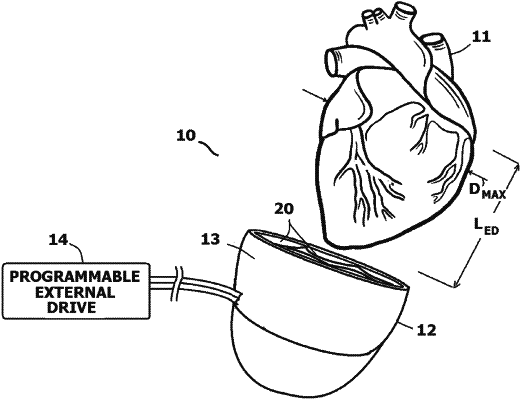| CPC A61M 60/191 (2021.01) [A61M 60/289 (2021.01); A61M 60/178 (2021.01); A61M 60/515 (2021.01); F15B 15/103 (2013.01)] | 16 Claims |

|
1. A method of determining strain characteristics for a construct being applied to a heart, said method including:
determining a set of strain characteristics required to be applied to the heart to provide an assist the heart that causes the heart to pump in a more efficient manner;
providing a construct with elastomeric elements, wherein each of said elastomeric elements expands along multiple axes when internally pressurized, and wherein said multiple axes include a first axis and a second axis;
in an unloaded condition remote from the heart, internally pressurizing said elastomeric elements to determine a pressure differential experienced by said elastomeric elements within said construct;
in said unloaded condition, calculating a first strain characteristic along said first axis as a function of said pressure differential by multiplying a log of said pressure differential times a first constant and subtracting a second constant;
in said unloaded condition, calculating a second strain characteristic along said second axis as a function of said pressure differential;
utilizing said first strain characteristic and said second strain characteristic to estimate dynamic strain characteristics to be applied by said construct;
comparing said dynamic strain characteristics estimated for said construct to said set of strain characteristics to determine if said construct will assist the heart in pumping;
placing said construct into contact with the heart in vivo; and
operating said construct to determine if said construct provides said assist to the heart.
|